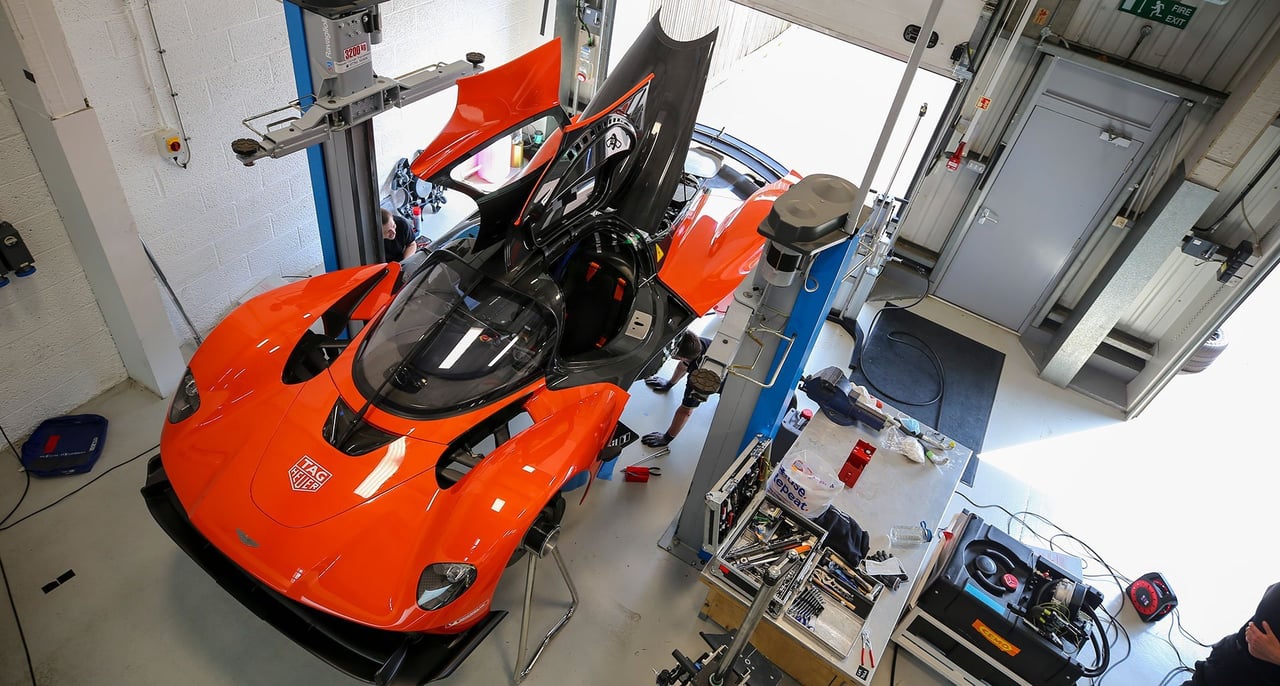
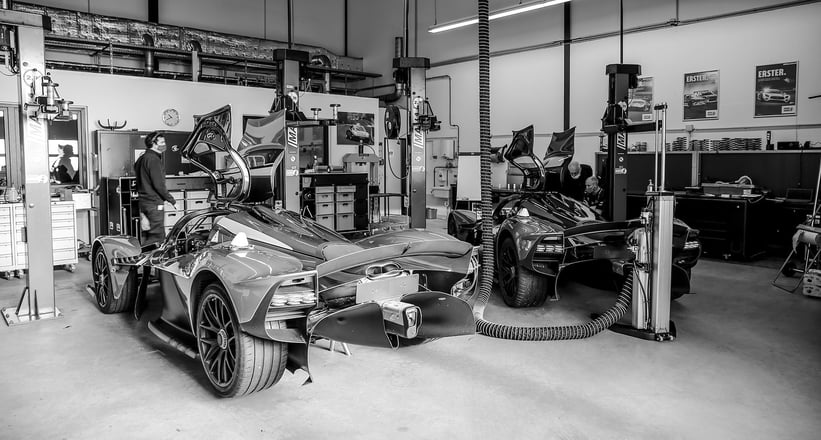

You’ve published quite a few nice books in the past, including Ruf, Inside SCG, When sex was safe, Spada and 911 LoveRS. Many of them are still available in the CD Shop. But is this your magnus opus?
Honestly, it is. In 50 years from now, people will still consider Valkyrie the wildest ride from Aston Martin’s past and maybe from the entire motoring history. Aston has always been a fairly conservative company, producing gorgeous cars yet never really pushing the envelope. Now, suddenly, they’ve partnered with Red Bull Racing – a team that’s even considered a disrupter in the crazy Formula 1-universe – to develop a hypercar from scratch. Next, they’ve asked us to produce a book about it. It was all very, very ballsy. The end result is quite something, too. Both the book and the car, I mean. Motoring history knows a few iconic milestones: Bugatti Atlantic, Ferrari 250 GTO, McLaren F1. Valkyrie is next in line. It most probably will be the last of its species as well. We felt extremely fortunate to be allowed to witness the entire development from inside, because no one will ever repeat this.
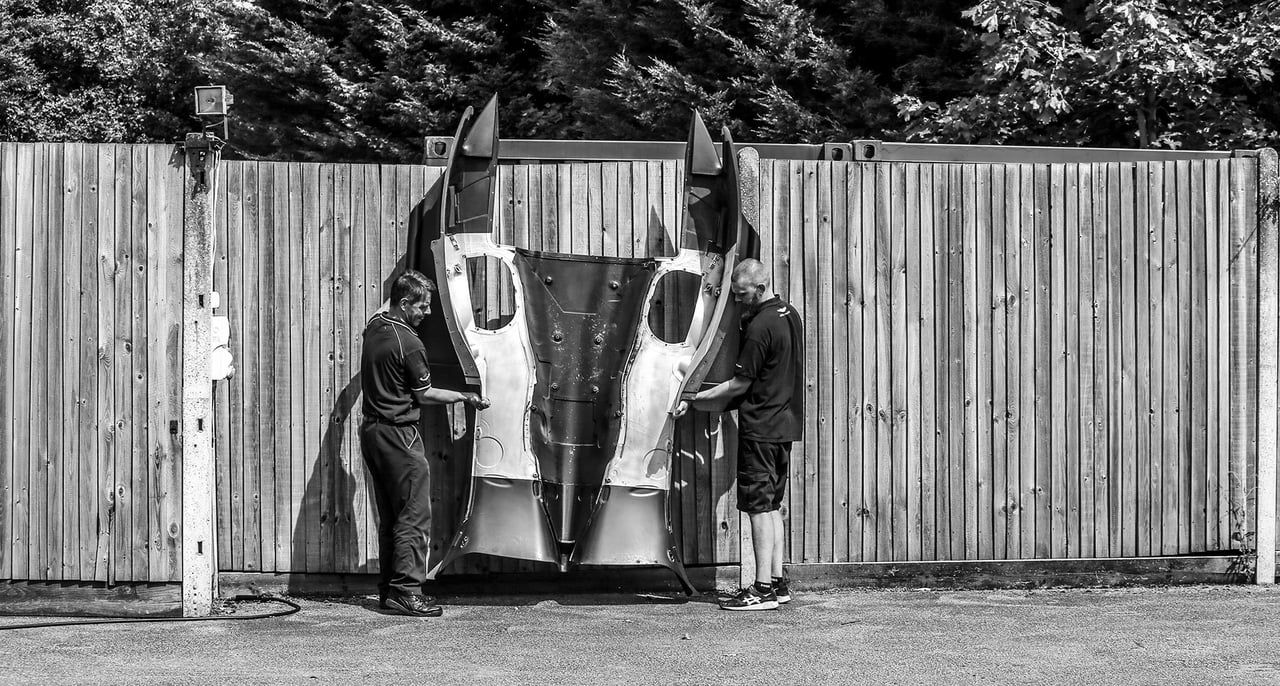
Quite a few sports car makers love to claim they’ve done a proper McLaren F1-successor, yet never really walked the talk. Why would Valkyrie be different?
It’s not so much a matter of technology as such. Apart from a few special aeronautic bolts, Valkyrie is not jam-packed with parts from Max Verstappen’s RB 17. It’s much more about applying Formula 1 thinking on each nut and bolt, up to the last detail, and never settling for second best. OEMs typically develop new cars up to 80 percent of their full potential, whether it’s for performance, fuel economy or occupant’s head room. Even reputed sports car brands consider the last little bits just too expensive, while exploring the utter boundaries hardly crops any substantial gains. Formula 1 represents a totally different reality where a driver like Nikita Mazepin typically lapped two seconds slower than Lewis Hamilton. This means around one percent separates the heroes from the undisputed backmarkers. Obviously, this completely different focus led to enormous clashes, advanced politics and some serious peacocking. Also, Red Bull’s technical director Adrian Newey is an absolute legend who’s been musing about this hypercar since his childhood years. From the start it was utterly clear he wasn’t going to back down. Never. Nowhere. He wanted a naturally aspirated V12, because it best combines pure power with raw emotions, but he ruthlessly told Aston theirs was far too heavy and not nearly powerful enough. This takes guts. And it takes guts, too, for Aston’s seniors to accept this, allow Cosworth to develop a mind-boggling V12 from scratch for barely 150 cars and settle the bill without blinking. Even so, Aston’s engineers kept on begging Red Bull not to take it too far, and mainly to define clear performance targets, so they at least knew they weren’t chasing the unicorn. But Adrian refused with all his might. It’s never enough in his world, and he won’t drop his pencil until the full potential is unearthed. Moreover, he only has one boss: the stopwatch. Sadly, there was one serious disadvantage to all this. In the sport, they’re always working against a strict deadline: the next race. This project didn’t have such a non-negotiable objective, which is the main reason why the cars were two years late. Luckily, our book explained to the customers it wasn’t because the engineers were lingering around or eating their noses. It’s because they pushed further than anybody. And it shows. Even someone high up at McLaren admitted, of the record, Valkyrie is the car they should have made.

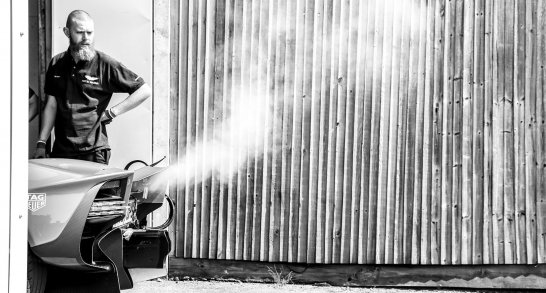

Where did the idea originate to make such a daring book?
It’s always been our dream to document the development of a new car – from the white sheet of paper all the way up to the first production vehicle – because people have no idea how much effort and knowledge goes into it. We’ve challenged a few brands before, but not one proved courageous enough. Until Aston’s chief designer Miles Nurnberger approached us one day. Aston Martin was about to jump into bed with Red Bull, and he instantly understood this would be such an interesting, challenging and matchless collaboration, each detail needed to be documented. Also, they were asking their best customers to drop a considerable deposit and then keep quiet for five years before eventually getting something in return for their money. Most car makers in a similar situation smoothen this intolerable wait with arty-farty sculptures or tickets for VIP-events. Aston felt it should be a bit more genuine. A multi-part book hence. Each six to eight months, a next chapter told customers exactly how the project was evolving – always at least 150 pages and every time tackling another theme. This was highly appreciated. Also, this peculiar approach makes the book unique. Pretty much all car books are written with the luxury of hindsight, a priori presenting a nicer, sweetened up version of what had actually happened. That’s just human nature. We, on the other hand, were always there at the heat of the moment. We already spent time with the engineers when there was nothing just yet, apart from geeks staring at screens and shifting enourmous digital files. This paints a far more authentic picture. It took a little longer than planned, though. Eventually, we were involved in this project for the better part of five years. Since testing is forbidden in Formula 1, these teams became completely addicted to CAD-design and CFD-tests, without anybody manufacturing any tangible components until that one scary moment when they suddenly produce all prototype parts simultaneously and magically assemble them in one prototype. But it worked out fairly good. Straight out of the box, almost all parts functioned without any major hiccups. It proves how good digital engineering has become. The electronics, however, were a different matter. It was extremely complicated to calibrate the software from the engine, dog gearbox, hybrid system and active suspension and to ensure these four completely new and innovative systems smoothly collaborated together.

Car development is a very secret business. Were the engineers always happy to see you?
In fact, they were. These boys and girls constantly realise miracles in the shade. Now they finally got some credit. During the painful moments, when everybody was cranking out 14 hour working days for months, we even served as a sort of wailing wall where they came to complain. There were many teams involved: Red Bull developed all parts which had the slightest influence on the performance, Aston did all the rest and made it beautiful, Cosworth engineered this mighty V12, Ricardo an innovative dog gearbox and Multimatic the world’s most complicated and expensive tub. At a certain point, we were in the strange position that we probably knew more about the project than anybody else, because we were the only ones who talked with everybody. Quite a few engineers became friends, too. And it was a unique experience to be given a private lecture on aerodynamics from Adrian. It did take some getting used to for the Red Bull-guys, though. People who tend to exist in total secrecy do not always react very welcoming to a girl with a camera. But we always work so discretely, like flies on the wall, they even forgot our presence after a while. Initially, Adrian didn’t fancy the idea of this book, either, scared Ferrari would copy his best ideas. Luckily one simple argument convinced him: he could only hope his direct competitors would devour this book from start to finish, because no sane business man will be crazy enough to repeat such an adventure afterwards.
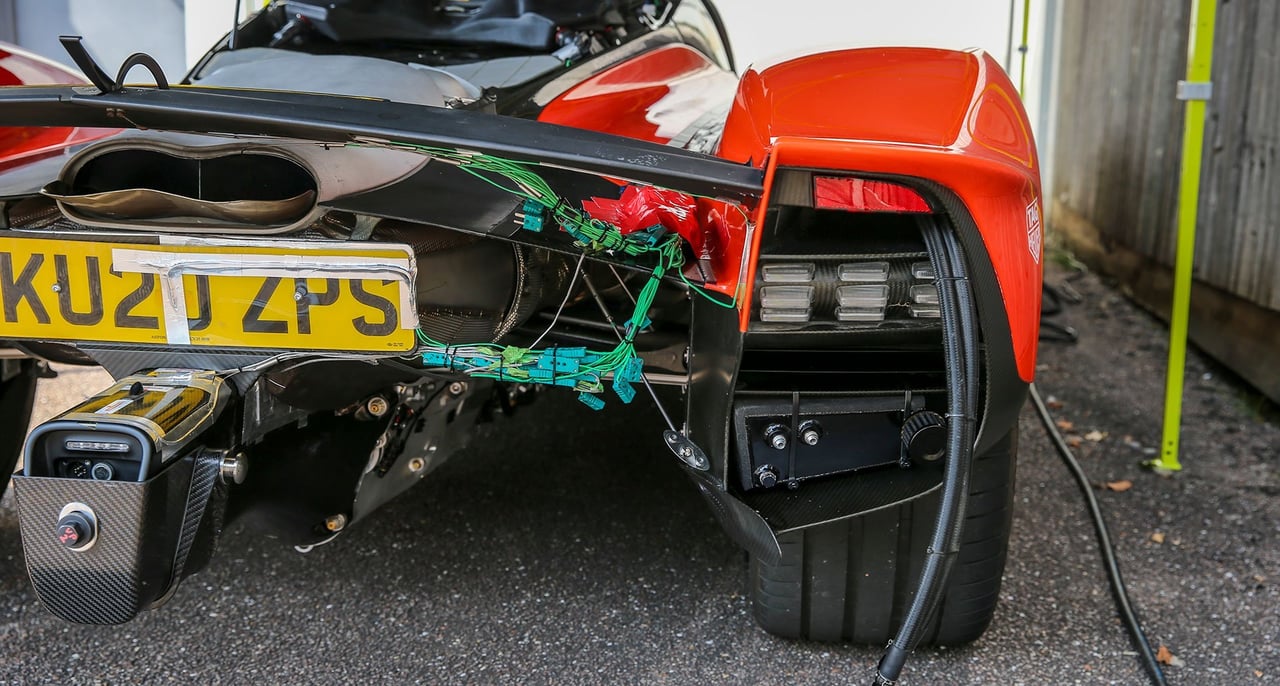
Why is that?
This brings us back to that famous 80/20 percent rule of car making. Financially it’s hardly sustainable to develop each nut and bolt to such an extremely high degree. Fact is, every new car is an evolution of a previous model – also in Formula 1. Valkyrie started from a blank sheet of paper, and three little components aside, everything is bespoke. No one ever does that. It also became clearer by the day Valkyrie was priced way too low. It offers so much high tech content compared with other considerably more expensive hypercars. This razor-sharp price point in combination with Red Bull’s uncompromising approach led to quite some stress. The human aspect was quite interesting, too. Initially, most Red Bull-engineers believed the Aston-guys didn’t know the first thing about car engineering, while Aston considered the Red Bull-crew as totally obsessed, pig-headed nutters. After a while, they began to understand each other better. Eventually, there’s a lot of mutual respect, despite all complications, financial woes, management changes and even an official divorce from Red Bull after Laurence Stroll came in and created Aston Martin Formula 1 out of Racing Point. Was that conflict between Red Bull and Aston avoidable? No, because Valkyrie would never have been what it is now. It was very fascinating to see how two totally different corporate cultures clashed, with on the one hand an ultra-hierarchical company with one guy, Adrian, who dictates all. He’s one clever man, that’s for sure, but his real strength is his ability to always squeeze the absolute maximum out of his people, pushing them to keep going until late at night, exploring all boundaries without questioning anything. Very impressive. Aston, on the other hand, is much more managed by committee – with all the inherent advantages and disadvantages.’


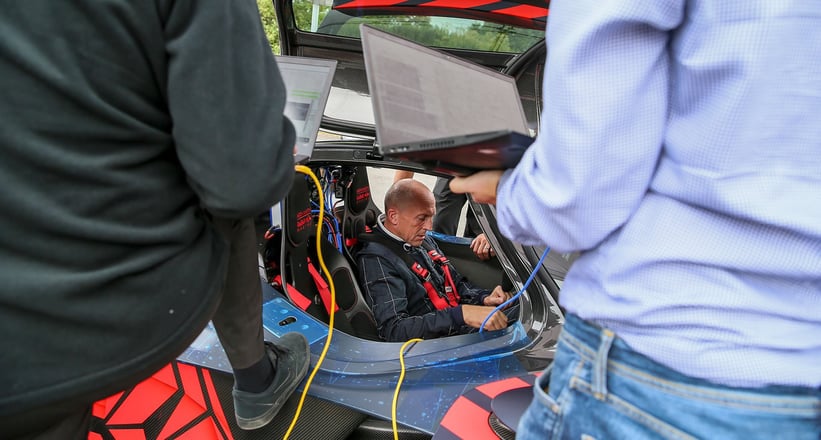
Can you give a few examples of how far they’ve pushed it?
Although the car is fairly small, still literally half of it has been sacrificed for aero. This leaves hardly any room for the V12 and the gearbox, while the occupant space is so ludicrously small, they had to organise fitting sessions for customers. Although the steering wheel is bespoke – a carry-over wheel would look ridiculously big – it still was a nightmare to secure enough space for a gloved hand. The seats are quite simple, though. These consist of a few cushions only. There isn’t room for anything else. One day, an homologation engineer discovered the hydraulic lines needed a special burst-sleeve protection to turn the fluid into mist in case of a crash – at around 200 bar they brutally cut any finger of if they snap. Despite this sleeve being only five millimetres thick, it required a complete reengineering of the tub and cockpit because there just wasn’t enough room to stash them. It even proved problematic to bury the first aid kit somewhere. Luckily, a smart mind found a loophole. Apparently, the law dictates all components need to be present in the car, but it’s not stipulated they should be together in the same packaging. It also took ages to establish appropriate cooling, if only because Valkyrie generates so much downforce, it started sucking air out of the radiators at high speed. All wires are special lightweight spec, bolts come from aeronautics yet with a special coating… the list is endless. The dog box shifts so fast, gearbox manufacturer Ricardo needed high definition cameras to register the shift: the naked eye is unable to spot the movement. Each component of Valkyrie is a science project with its own story. It’s absolutely bonkers, and it largely suffices to keep an 800 page book exciting from start to finish. But we also focus a lot on the human aspect. What drives these people, how do they cope with the relentless pressure, how on earth did Adrian ever ‘earn’ the position that he can completely ignore all practical or financial concerns?
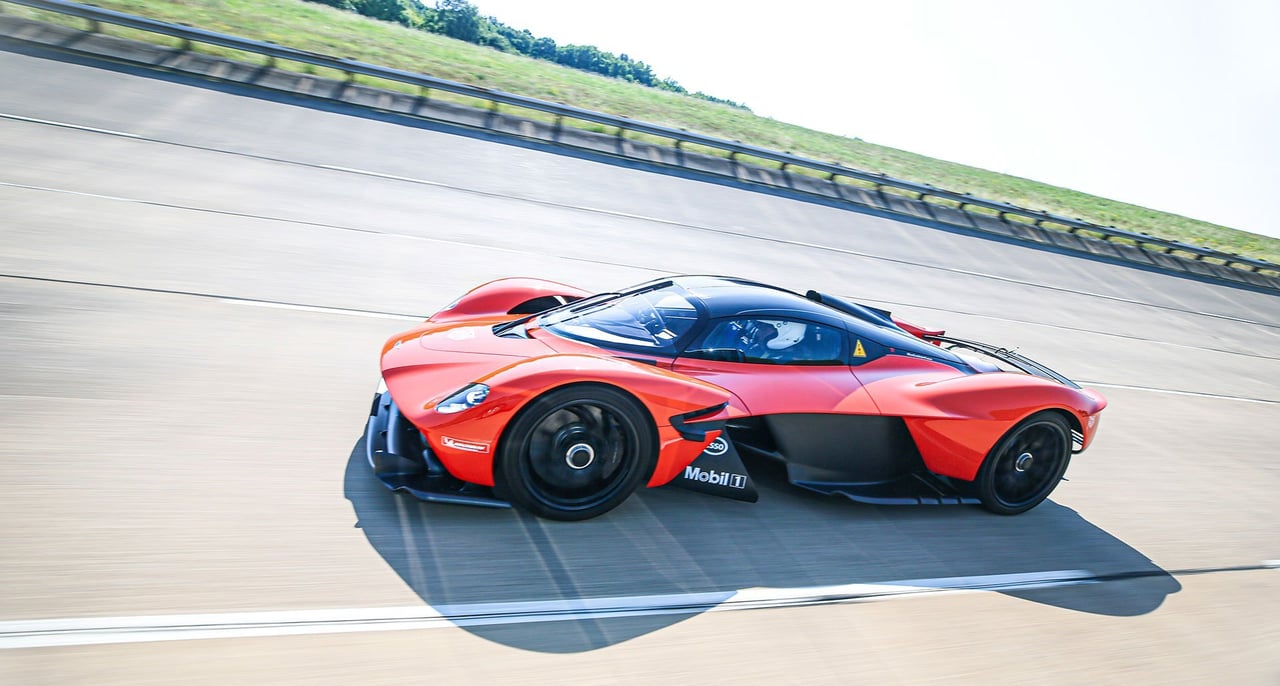
Did you never think: why bother?
Formula 1 teams tend to push it extremely far, and Red Bull Racing again goes a little further, all eyes on laptime only. That’s just who they are. Rumour has it, one Red Bull engineer once got flak after he had taken the outer side of Adrian’s pencil line to define the size of a part whereas, obviously, it had to be the inner side. It’s really a whole other attitude. Is it crazy? Yes. Does it make sense? Not always, probably. Valkyrie is so blindingly fast, most owners will never squeeze it out to the max anyway. But there’s also a lot of beauty in this relentless striving for efficiency and performance, even coming close to art. This is not just the fastest road car of the entire Milky Way. It’s mainly the three dimensional result of a very peculiar, uncompromising philosophy that only occurs in the world’s most advanced sport. Maybe not all owners will frequently take their Valkyrie out, but they at least have something to talk about at their gentlemen’s club, far exceeding the typical horse power and top speed discussions. Does it make sense to push so hard that a few careers got ruined and more marriages didn’t survive? Is it really worthwhile to spend that much effort and money the company came close to bankruptcy? I guess not. But it’s kind of cool as well. Whether it’s the Chinese Wall, the Eiffel Tower or some of the most iconic cars ever, history is coloured by totally limitless and crazy projects. Exactly this makes our book so special. Imagine you would now find a book on the Ferrari 250 GTO, produced in the day by journalists who were there, talking with Enzo, Giotto Bizzarrini, Sergio Scaglietti, Luigi Chinettti and all other legends in the making. Because yes, without a shadow of a doubt, Valkyrie will be headlining Villa d’Este in 2062.
Buy ‘Inside Valkyrie’ in the CD Shop



‘Inside Valkyrie’ by WAFT is a four part book which covers the entire development of Aston’s ultimate hypercar, together with all details, anecdotes and long talks with all protagonists. Part one tells how Red Bull and Aston Martin came together. Part two explains the design process and the aero development, including a private lecture by Adrian Newey. Part three reveals how many endless days were spent on the engineering of engine, chassis, gearbox, active suspension and what else, while part 4 is almost like an exciting novel, testifying what a tough endurance race testing and assembly eventually became. It’s limited to 300 numbered copies only and available in the CD Shop.



























